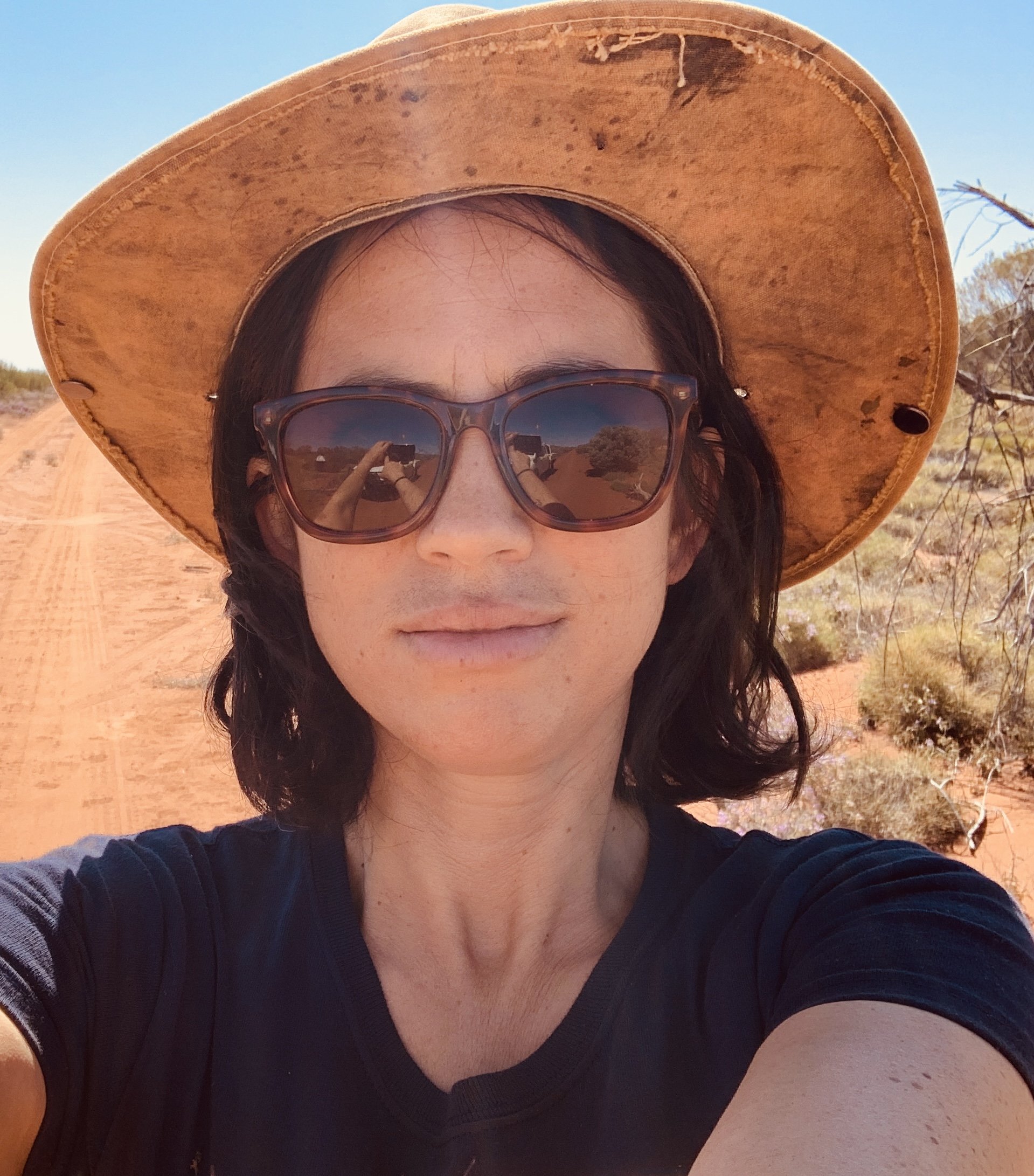Photo credit: ANU
Flying over the geological formations around Purnululu in Western Australia
I am an ARC DECRA Fellow in the Keogh Lab at the ANU. My areas of interest are evolutionary biology, herpetological systematics and biogeography, and I am particularly interested in the role of geology and geomorphological processes in shaping contemporary genetic patterns across Australia’s desert regions. Outside of science, I play violin and viola in various groups, I love bushwalking and long distance hiking, and my happy place is in the garden, where I have quite the obsession for any shrubs in the genus Eremophila (probably from all my fieldwork in the deserts!). I have 3 little kids that keep me busy, and happily they share my love of bugs, lizards, and minerals.
My journey in evolutionary biology.
I have always loved geology; plate tectonics, mineralogy, sedimentology, geomorphology. These things really interest me. I marvel at the intricate, folded layers of banded iron formations in their many shades of reds and browns, or the way continents rearrange their position on Earth over time. I'm also interested in ecology; the function of landscapes, the impacts of humans on natural systems, and biodiversity. Between 2000 and 2005, I completed a BA/BSc at the Australian National University, majoring in Geography and Geology. I was able to see a whole lot of Australia during course-work field trips, and I was lucky enough to be part of a marine research crew on board the RMV Southern Surveyor conducting a month-long study of submarine vents of arc and backarc volcanoes, and mapping seafloor bathymetry between Tonga and Samoa. I puked for about 3 weeks on that boat though, and realised I had no career as a marine volcanologist or geochemist. I also was terrible at petrology and structural geology, so I didn't hold high hopes of any serious geological profession.
Through what I still consider a lucky twist of fate, I met Prof. Scott Keogh, who at the time was in need of someone with GIS mapping skills, and he introduced me to Phylogeography - a discipline that uses molecular techniques to investigate how historical and current environmental factors (like geology, geomorphology and climate) have shaped the evolutionary histories of plants and animals. This field brings together everything I am interested in. Having no formal training in biology or genetics, it was a big step to start Honours in evolutionary biology, so I started slowly, by reading two books that awoke the "inner biologist" in me; Jonathan Weiner's The Beak of the Finch, and David Quamen's The Song of the Dodo. In 2005 I received a Summer Scholarship from the ANU to complete a short genetic project for Scott that involved sequencing mtDNA from small-eyed snakes as part of a broader phylogeography project along the sandstone peninsulas near Sydney.
For my Honours project I originally was going to work on an aspect of gecko phylogeography in the forests of south Western Australia, but through another twist of fate I ended up tagging along on a joint Conservation and Land Management (CALM, and now DEC) and Western Australian Museum (WAM) three week long field trip with Dr. Paul Doughty, conducting the first regional biological survey of the remote and arid Pilbara, in far north Western Australia. Being a largely unexplored area of crazy endemism, with a spectacularly ancient landscape carved by billions of years of erosion, the Pilbara became the stage on which I would "watch the lizards do their evolutionary dance" and I have been completely in awe of that place and its animals ever since.
I started my PhD in March 2007 with Scott on a project stemming from the results of my Honours work, but I extended my interest of Pilbara phylogeography to other areas of Australia's arid zone. My main focus was how increasing aridification of central and northern Australia and the development of the vast sand deserts shaped the evolutionary history of arid zone geckos, and how rocky upland areas such as the Kimberley, Pilbara and the central Australian ranges enabled wet-adapted taxa to persist and diversify in these desert refuges. I was lucky enough to spend 2 stints of my PhD working with Prof. Craig Moritz at UC Berkeley, who has since joined the department here at the ANU, and I also got to travel to many remote and spectacular parts of the country “chasing lizards”. Through my genetic work, I also have discovered and described a number of new species, which is a time consuming but very cool part of the job as well - I had no idea how many species there still are waiting to be discovered!
I handed in my thesis in 2011 (yep, it's Dr. Pepper!), and promptly took a year off to travel. While I was relaxing in the tropics I realised I had so many more questions about arid zone history and its impact on the diversification of desert reptiles that I had to come back. Scott was still not sick of me so he employed me as a postdoc, where I am still living the dream (12 years and counting!), working on a range of different projects including on African flat lizards and the Australian Amphibian and Reptile Genomics Initiative (AusARG). I always knew I would be drawn back to the Australian arid zone; it’s ancient and crumbling landscapes juxtaposed with young dunes is such a cool system to overlay with genetic data to further uncover how geology and landscape history have driven the evolution of the unique arid zone fauna. And the DECRA project I started a few months ago in 2023 aims to do exactly that!


